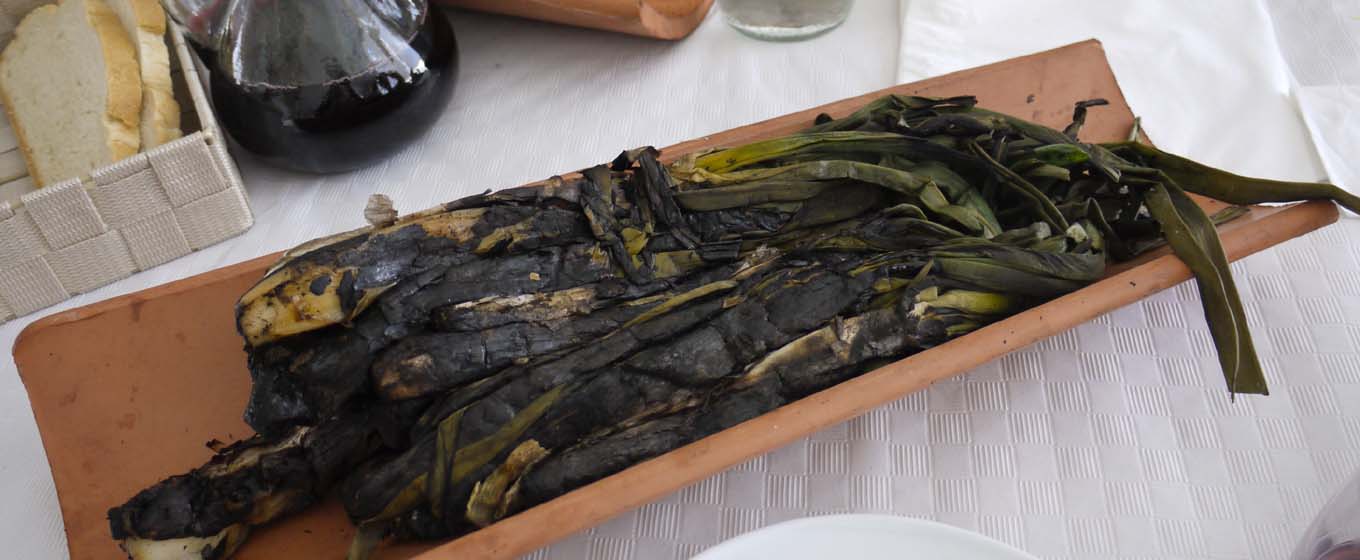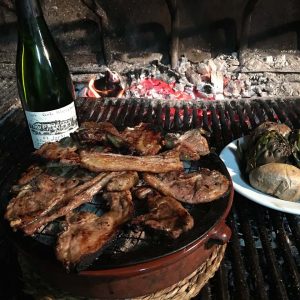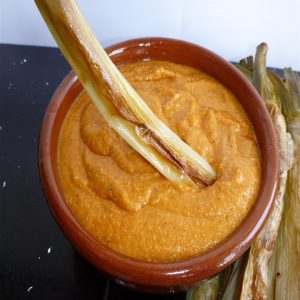It is commonly accepted that the CALÇOTS were developed by Xat de Benaiges, a peasant farmer from Valls by the end of 19th century. He began to grow white scallions covering them with earth so that the edible part remained white.Usually calçots are grilled over hot coals and eaten with a special sauce known as salvitxada, after removing the outer layers.
Calçots are harvested late February through early April. They are prepared in a rustic manner by grilling them over dried grape vines. The fire leaves the outer skins blackened and they finish cooking by wrapping them in paper for a brief rest. The finishing touches in eating calçots are to strip off the outer charred leaves (taking off the ‘sock’) to reveal the sweet white inner stalk.It is preferable to collect “calçots” between November and April.
By the beginning of the 20th century, calçot was already a regular feast-day dish for many families in Valls. In 1896, the first fiesta del calçot de Valls (calçot de Valls festival) was held, which has come down to us today with renewed strength and vigour thanks to the promotion of calçot through conferences, the written media, etc. Calçots are usually eaten in January, February and March, roasted over a wood fire and accompanied by the special salvitxada sauce.
We can date in the middle of century the star of the great impulse experienced by the calçotada all over the country, when the Artistic Group of the Pot made its famous calçotades and invited personalities of the artistic and cultural world of Barcelona, which helped to spreading it.
In year 1995 the Generality of Catalunya granted the denomination of quality “Calçot de Valls” and in year 1996 the Regulatory Board was constituted. The geographical area of this denomination includes the regions of the Alt Camp, the Baix Camp, the Tarragones and the Baix Penedes.



